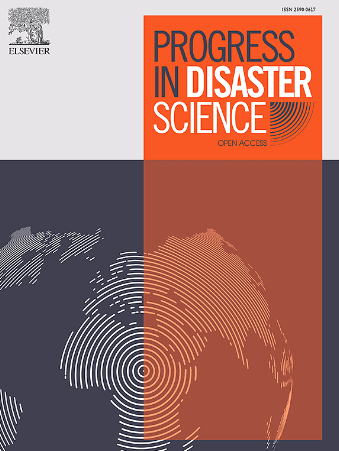在疏散期间优化医疗服务的旅行路线:网络和共享移动视角
IF 3.8
Q3 ENVIRONMENTAL SCIENCES
引用次数: 0
摘要
后送期间的医疗运输包括在紧急情况下运送有医疗需要的个人和运送医疗救济物资和人员的协调努力。共享移动是一个概念,其中可用的交通资源在用户之间共享。本研究提出了一个具有共享移动性视角的医疗后送运输优化模型,解决了路线效率、服务时间框架和资源约束问题。该模型的重点是在撤离期间运送医疗救援物资、放下医疗人员和接走医疗撤离人员。它整合了一个专门为医疗目的设计的运输网络,结合了多个需求节点,具有指定的时间框架和提前和延迟交付的惩罚成本。最佳旅行路线确保在可接受的服务时间间隔内为需求节点提供服务。根据节点的需求要求,设计和更新旅行路线,以满足医疗用品运送、人员运输、患者疏散等多样化需求。本研究提出了一种优化医疗人员、物资和撤离人员旅行路线的基本方法,显著提高了撤离期间医疗运输的效率。这种方法不仅优化了距离和成本,而且确保遵守严格的时间限制,解决了将各种医疗服务整合到单一旅行路线中的挑战。一个数值示例演示了该模型如何有效地将总体旅行成本最小化,同时结合时间敏感的医疗运输时间表。本文章由计算机程序翻译,如有差异,请以英文原文为准。
Optimizing travel route for medical services during evacuation: A network and shared mobility perspective
Medical transportation during evacuation encompasses the coordinated efforts to transport individuals with medical needs and deliver medical relief goods and personnel during emergencies. Shared mobility is a concept where available transportation resources are shared among users. This study proposes an optimization model with a shared mobility perspective for medical transportation during evacuations, addressing route efficiency, service timeframes, and resource constraints. The model focuses on delivering medical relief goods, dropping off medical personnel, and picking up medical evacuees during evacuations. It integrates a transportation network specifically designed for medical purposes, incorporating multiple demand nodes with specified time frames and penalty costs for early and late deliveries. The optimal travel route ensures that demand nodes are served within acceptable service time intervals. Travel routes are designed and updated according to demand requests from nodes to satisfy diverse demands such as delivering medical supplies, transporting personnel, and evacuating patients efficiently. This study presents a foundational approach to optimizing travel routes for medical personnel, supplies, and evacuees, which significantly enhances the efficiency of medical transportation during evacuations. The approach not only optimizes distance and cost but also ensures compliance with strict time constraints, addressing the challenge of consolidating various medical services into a single travel route. A numerical example demonstrates how this model effectively minimizes overall travel costs while incorporating a time-sensitive schedule for medical transportation.
求助全文
通过发布文献求助,成功后即可免费获取论文全文。
去求助
来源期刊

Progress in Disaster Science
Social Sciences-Safety Research
CiteScore
14.60
自引率
3.20%
发文量
51
审稿时长
12 weeks
期刊介绍:
Progress in Disaster Science is a Gold Open Access journal focusing on integrating research and policy in disaster research, and publishes original research papers and invited viewpoint articles on disaster risk reduction; response; emergency management and recovery.
A key part of the Journal's Publication output will see key experts invited to assess and comment on the current trends in disaster research, as well as highlight key papers.
 求助内容:
求助内容: 应助结果提醒方式:
应助结果提醒方式:


